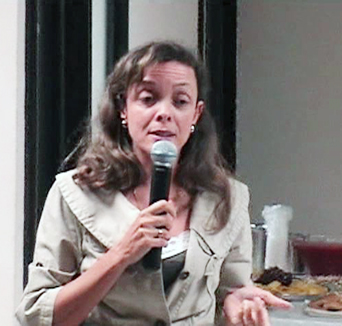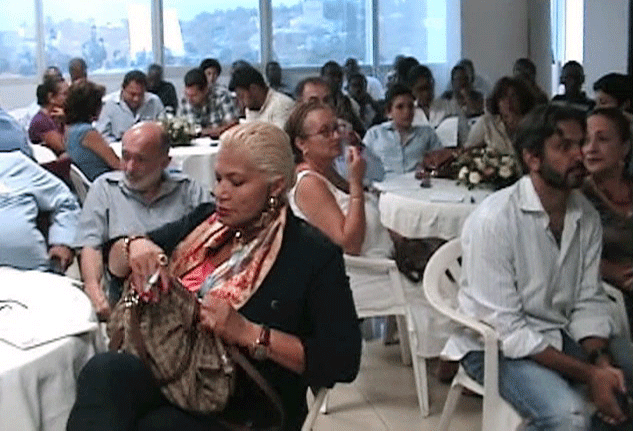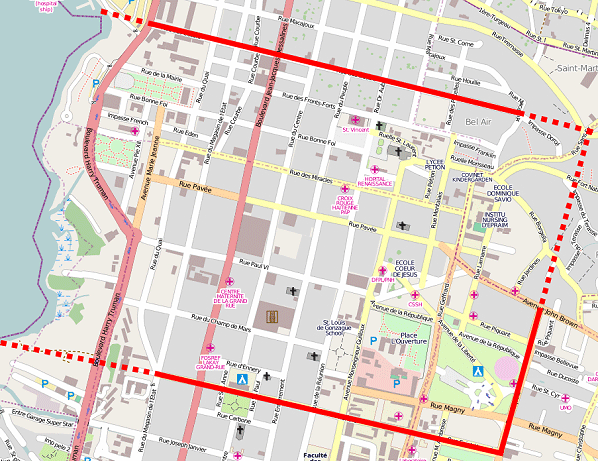Impasse?
What’s blocking the capital’s path to reconstruction?
Part 1 of 3
Port-au-Prince, June 9 - If Haiti’s capital could be re-built from documents alone, reconstruction would be well underway already.
Powerpoints, PDFs, strategic documents and reports with beautiful schematics and discussions of “social mixing,” “urban villages” and a “shared vision” circulate on the Internet and are piled high on desks and tables.
Tens of thousands of dollars have been spent on conferences and meetings in Haiti and abroad – Boston, Montreal, San Juan… But so far, there is no single plan nor – it appears – is there even a shared vision.
Instead, there is discussion, more discussion, competition and even disaccord. But very little rebuilding.
During a two-month investigation carried out with journalism students, Haiti Grassroots Watch (HGW) discovered:
• There are at least two and maybe three different proposals in the works for downtown Port-au-Prince and the greater metropolitan area.
• At least two are the result of contracts paid out of Haiti’s meager state coffers.
• Port-au-Prince City Hall – which is supposed to be “financially and administratively autonomous” of the central government – has accused the ministries of cutting it out of the planning in an effort to “make money on the back of the victims,” according to Mayor Muscadin Jean-Yves Jason.
• Even within the central government, there appear to be two competing plans, championed by two different ministries.
“SOS” from big property owners
“We can’t wait any longer! This is super project, and we participated from the beginning, and we congratulate you, but we can’t keep waiting!” said Michelle Mourra, a businesswoman who founded a group called “SOS Centreville” (“SOS Downtown”) to represent the interests of downtown property owners.

Mourra was speaking at a meeting of about 100 downtown property-owners, hosted by Port-au-Prince Mayor Muscadin Jean-Yves Jason last month. Attendees were treated to the first glimpses of a plan being developed by City Hall along with technical assistance from two Haitian firms. (HGW obtained a video recording of the meeting.)
But the meeting wasn’t at City Hall, which was destroyed on Jan. 12, 2010.
Instead, it was on the sixth floor of the gleaming Digicel edifice, Haiti’s tallest building, built by the multinational mobile telephone company two years ago and which withstood the deadly tremors as almost everything around it crumbled.
That Mayor Jason and his colleagues have been operating out of the air-conditioned building for over a year now says a lot about the state of public administration and of the rebuilding in general.
Nearly 17 months after the catastrophic earthquake which destroyed or seriously damaged an estimated $4.3 billion worth of homes, businesses and institutions, as well as infrastructure like roads, bridges, water and electricity systems, very little rebuilding has begun. Rubble has been removed from some areas, and a few plots leveled and prepared. But downtown is only slightly improved from January 13, 2010, and in some cases, worse due to camps, increased numbers of street merchants and failed electricity and telephone grids.
Five months ago, on January 12, 2011, Jason finally placed the “first stone” for the new City Hall complex, but – as a recent headline in the Haitian newspaper Le Nouvelliste asked – “When will the second stone be laid?”
As Mourra insisted that afternoon, “Port-au-Prince can’t wait anymore.”
The conference room – full of representatives of Haiti’s biggest businesses and wealthiest families, who have controlled the country’s economy for decades – Mevs, Mourra, Baboun, D’Adesky, Handal, Berman, Helmke, etc. – broke out in applause.

A view of the property owners attending the May 19 meeting in the Digicel conference room. This photo and the one above taken from a video of the meeting.
Frédéric Baboun leaned forward as he implored: “You are the first citizen of the city, we don’t know who to ask anymore! You need to accept your responsibilities because we are tired of seeing our buildings downtown be destroyed… We’ve been listening to experts for 15 months!”
Indeed, the earthquake only accelerated the Haitian capital’s downward spiral. Thieves have taken advantage of the chaos created by the earthquake – stealing light fixtures, doors, even toilets out of damaged buildings. Acres of destroyed or damaged property remain, snarled downtown traffic is often at a stand-still as buses and cars fight mounds of garbage, piles of rubble and an explosion of street vendors.
Noting that downtown risks turning into a “ghost town” as businesses flee up the hill to Delmas and Petion-ville, Mourra pleaded with the mayor to move the rebuilding plan forward.
But there is more than one plan in the works for Haiti’s capital, and the one Mourra and the other property owners were discussing is not the first, or the last.
Prince Charles in Haiti?
Almost one year ago, on July 28, Minister of Finances Ronald Baudin told participants at one of the many “reconstruction” meetings that rebuilding downtown would be the first stage of the capital region's reconstruction, and that the "Prince Charles Foundation" – as the Prince's Foundation for the Built Environment is commonly called – would propose a plan.
“We will build a model downtown that will prefigure the metropolitan area of tomorrow,” said Baudin, who chairs the multi-ministerial “Council for the Facilitation for Downtown Reconstruction.”
About six weeks later, on September 2, the central government defined a 200-hectare (about 500 acres) area and declared it “d’utilité publique” (“of public interest”), much to the outrage of property owners like those who attended the May 19 meeting.

The area designated "of public interest." Source: Prince Charles Foundation
Once a final plan was defined, the state might expropriate property, reimbursing property owners at a “just and equitable” price, according to the declaration. In the meantime, nobody could buy, sell, or alter their property. Business owners told HGW they have had trouble getting bank loans ever since, because banks don’t want to gamble on property that does not have a clear value.
A week after the declaration, without putting the project out to bid, the Haitian government signed a US$295,000 contract with the Prince Charles Foundation. The funds came from the state coffers.
“We chose the foundation because it is ‘not-for-profit,” Baudin told HGW. “We said - ‘Let’s make a choice where we don’t have to do a bid process.’”
According to Baudin, the market rate for Foundation proposal could have cost nearly $1 million.
The Foundation chose a partner – the US-based urban planning firm Duany-Player-Zyberk (DPZ) – and held consultation meetings in the fall, and again in January, to hear from Port-au-Prince authorities, business people and residents.
“It’s the first time, related to a government program, that there has been so much consultation,” Baudin claimed.
As of late April, according to Baudin, the recommendations – a series of options for the 200-acre area – were “almost final.” The Foundation was just waiting for comments from the newly elected government, Baudin said. (Originally the final document was promised for mid-February.)
“I would say we are at a very satisfactory phase,” Baudin noted.
But not everyone is satisfied.
See part 2

